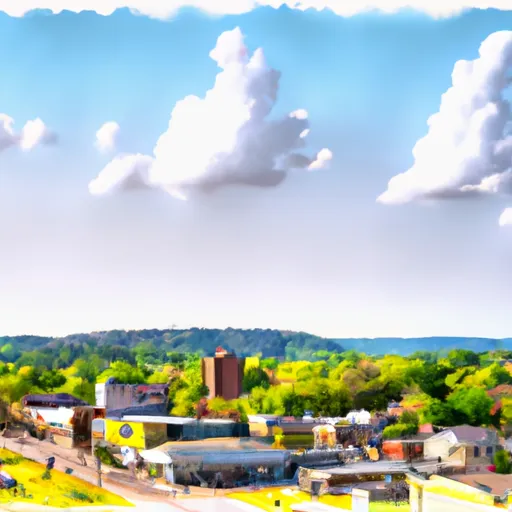-
 Snoflo Premium
Snoflo Premium
Get unlimited access to all our content
With no Ad interruptions! - Start Your Free Trial Login with existing account
Glenwood
Eden Index
Climate
7.5
•
Recreation
6.4
•
Community
•
Safeguard
5.2/10

Glenwood, Arkansas is a small town located in the southwestern part of the state. The area has a humid subtropical climate with hot summers and mild winters. Rainfall is relatively evenly distributed throughout the year, with most precipitation occurring during the spring and fall. The Caddo River runs through the town, providing opportunities for fishing, kayaking, and other water activities. The river is also a popular spot for swimming and picnicking during the summer months. The Ouachita National Forest is located nearby, offering hiking trails, camping, and scenic drives through the mountains. The area is known for its natural beauty and outdoor recreational opportunities.
What is the Eden Index?
The Snoflo Eden Index serves as a comprehensive rating system for regions, evaluating their desirability through a holistic assessment of climate health, outdoor recreation opportunities, and natural disaster risk, acknowledging the profound impact of these factors on livability and well-being.
Climate Health Indicator (CHI): 7.5
Glenwood receives approximately
1457mm of rain per year,
with humidity levels near 84%
and air temperatures averaging around
16°C.
Glenwood has a plant hardyness factor of
7, meaning
plants and agriculture in this region tend to thrive during the non-winter months.
By considering the ideal temperature range, reliable water supplies, clean air, and stable seasonal rain or snowpacks, the Climate Health Indicator (CHI) underscores the significance of a healthy climate as the foundation for quality living.
A healthy climate is paramount for ensuring a high quality of life and livability in a region, fostering both physical well-being and environmental harmony. This can be characterized by ideal temperatures, reliable access to water supplies, clean air, and consistent seasonal rain or snowpacks.
Weather Forecast
Streamflow Conditions
Upper Ouachita
Area Rivers
Upper Ouachita
Snowpack Depths
Upper Ouachita
Reservoir Storage Capacity
Upper Ouachita
Groundwater Levels
Recreational Opportunity Index (ROI): 6.4
The Recreational Opportunity Index (ROI) recognizes the value of outdoor recreational options, such as parks, hiking trails, camping sites, and fishing spots, while acknowledging that climate plays a pivotal role in ensuring the comfort and consistency of these experiences.
Access to outdoor recreational opportunities, encompassing activities such as parks, hiking, camping, and fishing, is crucial for overall well-being, and the climate plays a pivotal role in enabling and enhancing these experiences, ensuring that individuals can engage in nature-based activities comfortably and consistently.
Camping Areas
| Campground | Campsites | Reservations | Toilets | Showers | Elevation |
|---|---|---|---|---|---|
| North Toledo Bend State Park | None | 258 ft | |||
| Toledo Bend Military | None | 203 ft | |||
| San Miguel Park State Rec Area | None | 228 ft | |||
| Cypress Bend State Rec Area | None | 216 ft | |||
| South Toledo Bend State Park | None | 221 ft | |||
| Willow Oak | 15 | 216 ft | |||
| Hodges Gardens State Park | 30 | 320 ft | |||
| Converse Bay Rec Area - Toledo Bend Lake | None | 231 ft | |||
| Pleasure Point State Rec Area - Toledo Bend Lake | None | 197 ft | |||
| Indian Mounds | 37 | 190 ft |
Nearby Ski Areas
Catastrophe Safeguard Index (CSI):
The Catastrophe Safeguard Index (CSI) recognizes that natural disaster risk, encompassing floods, fires, hurricanes, and tornadoes, can drastically affect safety and the overall appeal of an area.
The level of natural disaster risk in a region significantly affects safety and the overall livability, with climate change amplifying these risks by potentially increasing the frequency and intensity of events like floods, fires, hurricanes, and tornadoes, thereby posing substantial challenges to community resilience and well-being.
Community Resilience Indicator (CRI):
The Community Resilience Indicator (CRI) recognizes that education, healthcare, and socioeconomics are crucial to the well-being of a region. The CRI acknowledges the profound impact of these elements on residents' overall quality of life. By evaluating educational resources, healthcare accessibility, and economic inclusivity, the index captures the essential aspects that contribute to a thriving community, fostering resident satisfaction, equity, and social cohesion.

